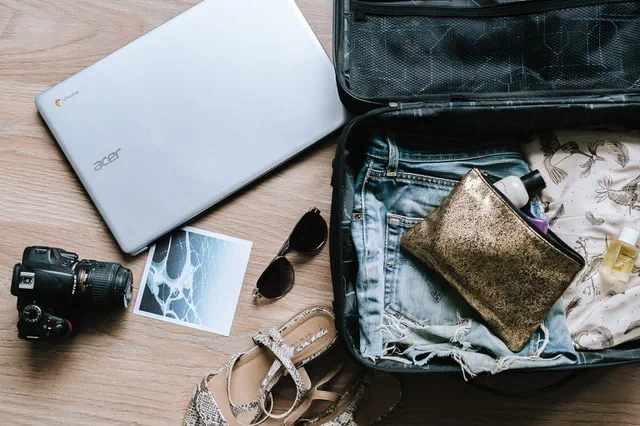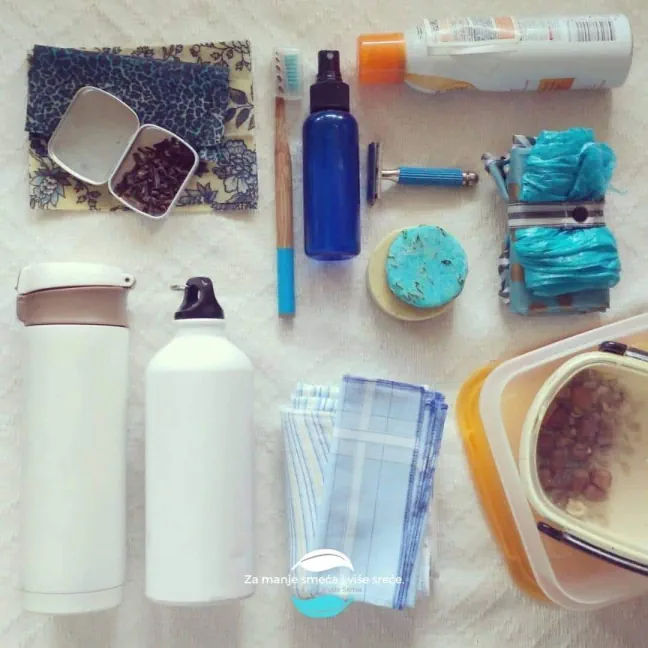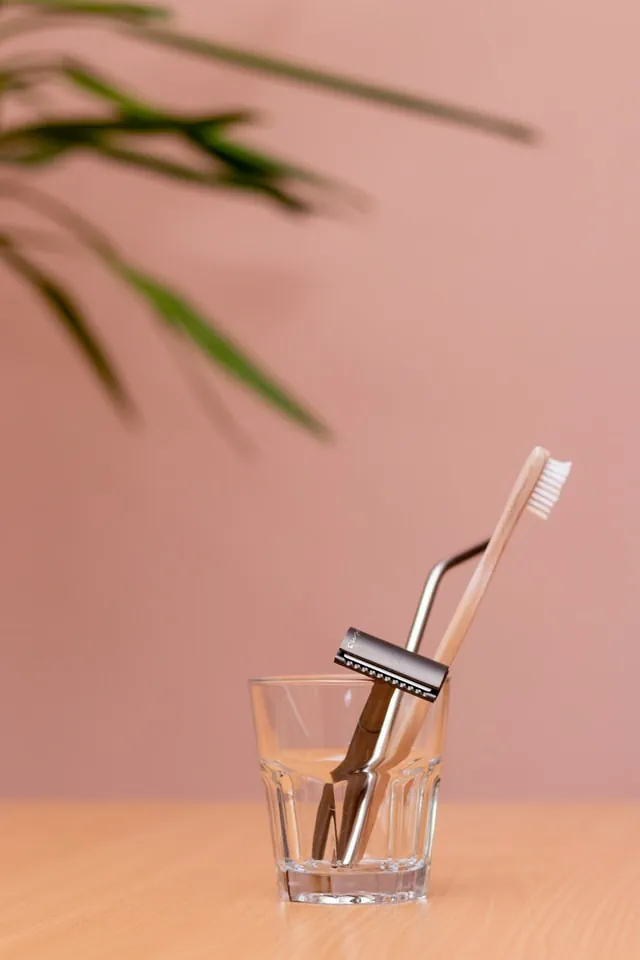
Zero Waste traveling

Table of Contents
Zero Waste traveling
Introduction

Black DSLR camera near sunglasses and bag. Artist: Anete Lūsiņa
We’ve covered by now some zero-waste food essential topics. Trust me, we can get more detailed than that, but it’s totally fine to start with some basics. What’s really interesting is, going along with this zero-waste movement, have you ever questioned yourself how to travel with as little trash as possible, or even zero-waste? You know, going completely plastic free, looking for ways not to leave food behind and maybe even recycle on the go. If you were to ask my mom, she would without a doubt say it takes the relaxation out of her vacation. But honestly, what do you think? Is it possible? Is it something you can see yourself doing the next time you travel, or when you get a chance to cross the borders the minute they re-open? I can’t even explain how eagerly I’m waiting for my next expedition. Everything is planned, I just need this pandemic to magically go away, and free us all. Go ahead, laugh. But, if you ask me, it’s good to be prepared in advance.
Transportation
Before you start packing, think about the location. Sit back, and visualize how far is the place you are planning to visit, and how long it might take for you to get there. It’s important to think about which transportation method you might be using. For now, studies have shown, the biggest carbon footprint was made in situations when we use planes and cars for long-distance destinations. So, the first thing to scratch off of your list is how far you can go by using local transportation and trains. They have a regular schedule, meaning they are going from point A to point B no matter, so it’s good to use that opportunity when you head out somewhere.
If you feel adventurous, and going by foot or bike doesn’t seem so odd (rather makes you curious), it surely can be a great option. Sharing the vehicle is also a great alternative. Bla Bla Car is great for this, and in a lot of situations can turn out cheaper than buying a bus ticket. Plus, if a group of you is going together, sharing the expenses and transportation can be both comfortable and more environmentally friendly (since we can’t simply stop creating carbon-dioxide, rather just stop the phase it’s growing/expanding).
Uuu, another way to get somewhere, if you feel extra adventurous, is hitchhiking. If you ask me, it seems scary to not know with whom exactly you are traveling. But, given how many people I’ve talked to who hitchhiked, it also seems exciting as a concept. But, as always, it is one thing to talk about, and a completely another to do. Just follow the flow, and see what seems like the best decision for you.

Travel essentials
What food to bring?
As we’ve mentioned by now, single-use plastics take almost half of the plastic production per year. Talking numbers, it’s never precise, but it can be as big as a million/billion, OR if we would specifically mention plastic bags, it’s up to five trillion. And obviously, these numbers just pile up, given how unorganized our system is with landfills.
To start your trip, firstly find containers, thermoses, reusable water bottles, cutlery, tote-bags that are light to carry and easy to bring. There is definitely something special to buy coffee to go (or tea) and stroll down the center of the city, I’ll have to admit. But, is it worth it? What would you do with the cup? I know that the easiest thing to do is throw it away, which is not the best solution.
Lately, coffee shops give discounts if you bring your own cup/thermos, encouraging “less trash movement”, which I think it’s awesome. Important thing to mention, when it comes to water bottles, you would even save a lot of money if you were to just bring your own, and refill.
Talking about real food now, it’s not the easiest to meal prep. You don’t have your kitchen equipment with you (obviously), and it just makes it that much harder to place yourself in that element. But, on the other hand, it is possible to eat more foods that are unprocessed, and pack the foods you bring with you.
Sandwiches are super easy to make while leaving a small amount of trash if you know where and how to look for the ingredients. Plus, they just scream “travel food”. You can go to the bakery and buy bread (total plastic free solution), go to the local store, and buy toppings that can be found without packaging or ideally wrapped in something recyclable (such as aluminum or paper). When you’re done with preparation, wrap them in homemade sustainable beeswax cloth and they are ready to go.
Pro-tip
If you like your trail-mixes, nuts, seeds, dry fruits, and some cookies or biscuits (whatever you prefer to munch while traveling), buy-in stores where you can measure the amount you want. Most likely they’ll be sold in paper bags (by far more biodegradable than plastic containers), or you can bring your own containers and ask them nicely to help you out.

Bamboo toothbrush, metal straw, and razor; Credit: Oana Cristina
Hygiene
Purse / backpack
Whenever it’s time to travel I have certain items that I always carry in my go-to purse, or backpack, and other items that I only use when I get to the room. Other than an already mentioned water bottle, tote-bag, and food container, I feel like certain products (packaged in recyclable material such as bamboo, glass, metal, and biodegradable paper) are trusty travel companions:
Antibacterial sanitizer
SPF creams
Very important. It’s not the best option to DIY them. They never turn out as good as the store-bought ones. But, the great thing is you can do your research and find local “zero-waste” sun protection (perhaps this list can help).
Thin towel
Instead of wet wipes. You can also bring cotton wipes, or terry cloth, that you put some water on before you need to use them.
Refreshing spray
Something like thermal water, or plain water in spray bottles. You can use any spray bottle you have to fill with a mixture made out of the water and mint (or lavender) essential oils.
Box with cloves
An alternative for bubble gums, for fresh breath.
Travel Bag
Getting to your room after a long day of walking and other activities that require some amount of energy, all you want to do is hit the showers, wash your face, brush your teeth, go to bed, rest, and accumulate energy for another fun day. Simple math, honestly. But what products do you use to maintain your hygiene? What’s their packaging made out of?
As I really like to go around the store and look at prices, new sustainable, and environmentally friendly products, see what they’re made of and what it is they try to sell and promote, I always happened to see pricey “eco-friendly” products that honestly aren’t worth that money.

Coconut Oil Shampoo Bar Recipe; Source: mommypotamus.com
Oral Hygiene
Starting from ORAL HYGIENE, you can easily make your own tooth-paste. There are plenty of recipes online, I just happened to like this one the most. Seemed like “the freshest” option. Toothbrush should also follow this “natural-made” path, bamboo is a great option. They are light, and easily recyclable. Obviously if you are nuts and very experimental, you can surely do the research and try to make your own (and if this really happens, please email me).
Face cleaning
For face cleaning methods, bring knitted make-up removers. You can wash them with other laundry, and they are pretty sustainable. As for products that are cleansing, try to find anything-but-plastic packaging. There should be a lot of herbal, natural products nearby.
Hair & Body
can be washed with (two different) firm soaps, usually found in paper packaging. It’s strange in the beginning, but does the job. You can also go for DIY methods, such as these 10 alternative methods.
Shaving
If you use razors, go for metal ones. Or any razor that can be used for more than once. Old time razors don’t have plastic parts, so they are easily recyclable if washed before.
Final words
After covering “what to bring” basics, in the end, I’m going to mention small changes that should be implemented into DAY-TO-DAY life, regardless of the traveling part.
Whenever you dine out for breakfast/lunch/dinner, try to order the amount that you feel you need. You don’t have to go overboard, know your limits. Try to avoid situations where you ask restaurants to wrap up the rest of the meal you ordered. It’s totally different when you have the freedom to maybe reuse the container you are given when you’re in the comfort of your home, and something else when you happen to travel and are uninformed where’s what (understandable and expected).
But, if you do end up with plastic containers, know that you can always wash them from any grease and food leftovers, dry them and place them in the nearest recycling bin for plastic products you can find. Maybe I would suggest also considering bringing some of the recyclable trash back home, given you organize your trash way better in places you do that often at.
Overall, small tips: drink beer on tap, use clothes and not disposable tissues. Buy locally in market places and less in supermarkets. Bring your bamboo or metal straws. Try to recycle and compost as much as you’re able. Be mindful of your actions and ask cashiers to not wrap your souvenirs.